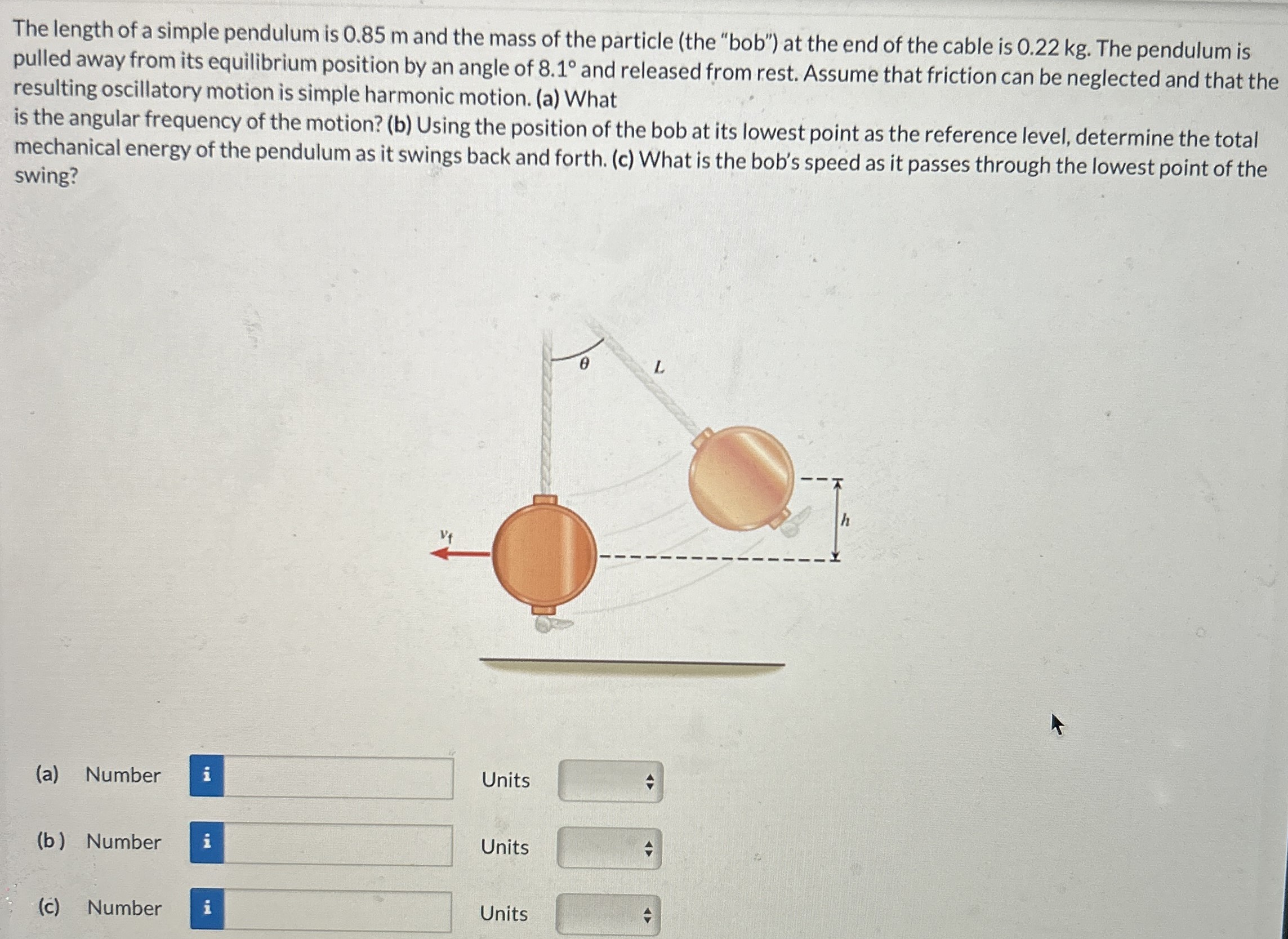The length of a simple pendulum is 0.85 m and the mass of the particle (the "bob") at the end of the cable is 0.22 kg. The pendulum is pulled away from its equilibrium position by an angle of 8.1∘ and released from rest. Assume that friction can be neglected and that the resulting oscillatory motion is simple harmonic motion. (a) What is the angular frequency of the motion? (b) Using the position of the bob at its lowest point as the reference level, determine the total mechanical energy of the pendulum as it swings back and forth. (c) What is the bob's speed as it passes through the lowest point of the swing? (a) Number Units (b) Number Units (c) Number Units
